Certified Jenkins Engineer
Setting up CI Pipeline
Demo Setup and Run Dependency Scanning
In this tutorial, you’ll configure Jenkins to scan project dependencies using two methods:
- NPM Audit (critical-level checks)
- OWASP Dependency-Check (via Jenkins plugin)
These scans help you catch vulnerabilities early and enforce quality gates in your CI pipeline.
Table of Contents
- 1. NPM Dependency Audit
- 2. OWASP Dependency-Check Plugin
- 3. Running the Pipeline
- 4. Enforcing Quality Gates
- Conclusion
1. NPM Dependency Audit
Add an NPM audit stage to your Jenkinsfile:
pipeline {
tools {
nodejs 'nodejs-22-6-0'
}
stages {
stage('Install Dependencies') {
steps {
sh 'npm install --no-audit'
}
}
stage('NPM Dependency Audit') {
steps {
sh '''
npm audit --audit-level=critical
echo $?
'''
}
}
}
}
What happens:
npm install --no-auditinstalls dependencies without auditing.npm audit --audit-level=criticalchecks for critical vulnerabilities and exits1if found.
Sample package.json
{
"scripts": {
"start": "node app.js",
"test": "mocha app-test.js --timeout 10000 --reporter mocha-junit-reporter --exit",
"coverage": "nyc --reporter cobertura --reporter lcov --reporter text --reporter json-summary mocha app-test.js"
},
"nyc": {
"check-coverage": true,
"lines": 90
},
"dependencies": {
"cors": "^2.8.5",
"express": "^4.18.2",
"mocha-junit-reporter": "^2.2.1",
"mongoose": "^5.13.20",
"nyc": "^15.1.0",
"serverless-http": "^3.2.0"
},
"devDependencies": {
"chai": "*",
"chai-http": "*"
}
}
CLI Output Example
# npm audit --audit-level=critical
@babel/traverse <7.23.2
Severity: critical
...
Note
NPM Audit supports four severity levels: low, moderate, high, and critical.
Adjust --audit-level based on your policy.
2. OWASP Dependency-Check Plugin
The OWASP Dependency-Check plugin scans multiple formats (HTML, XML, JSON, CSV) and supports quality gates.
2.1 Install the Plugin
- Manage Jenkins > Manage Plugins > Available
- Search OWASP Dependency-Check, install, and restart.
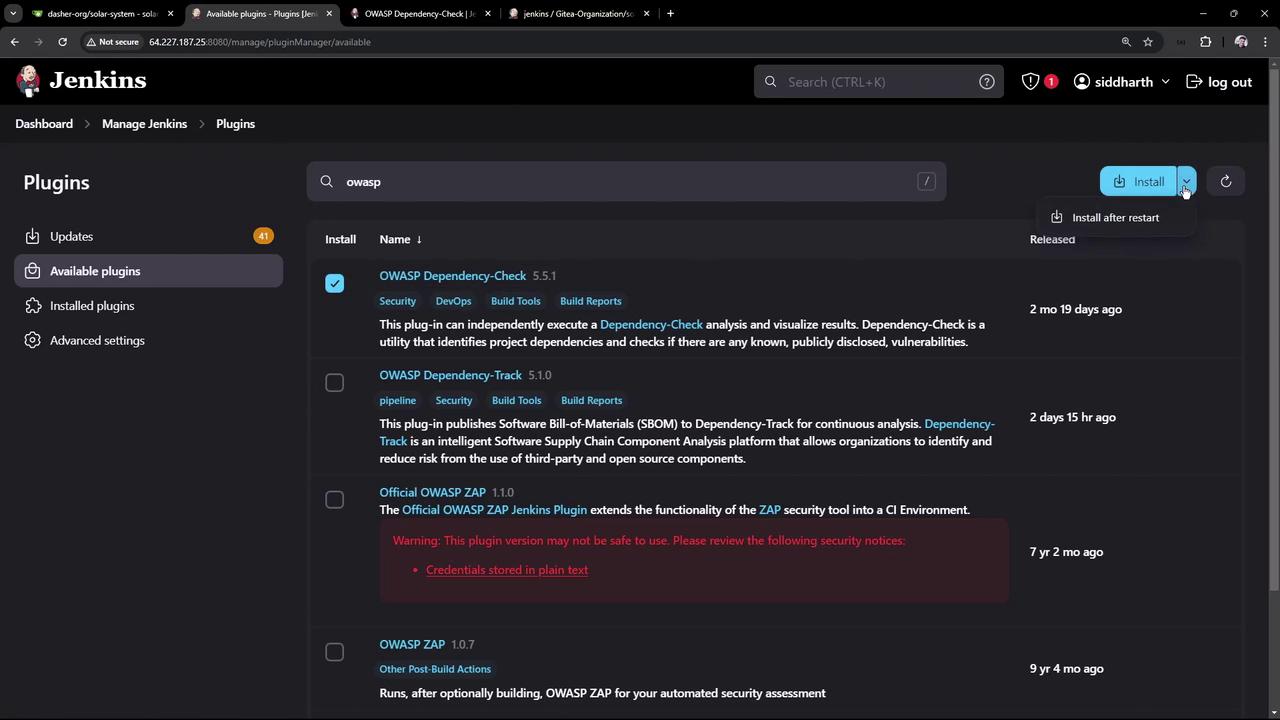
2.2 Global Tool Configuration
After restarting, go to Manage Jenkins > Global Tool Configuration.
Add a Dependency-Check installation (e.g., version 10.0.3) and enable auto-install from GitHub.
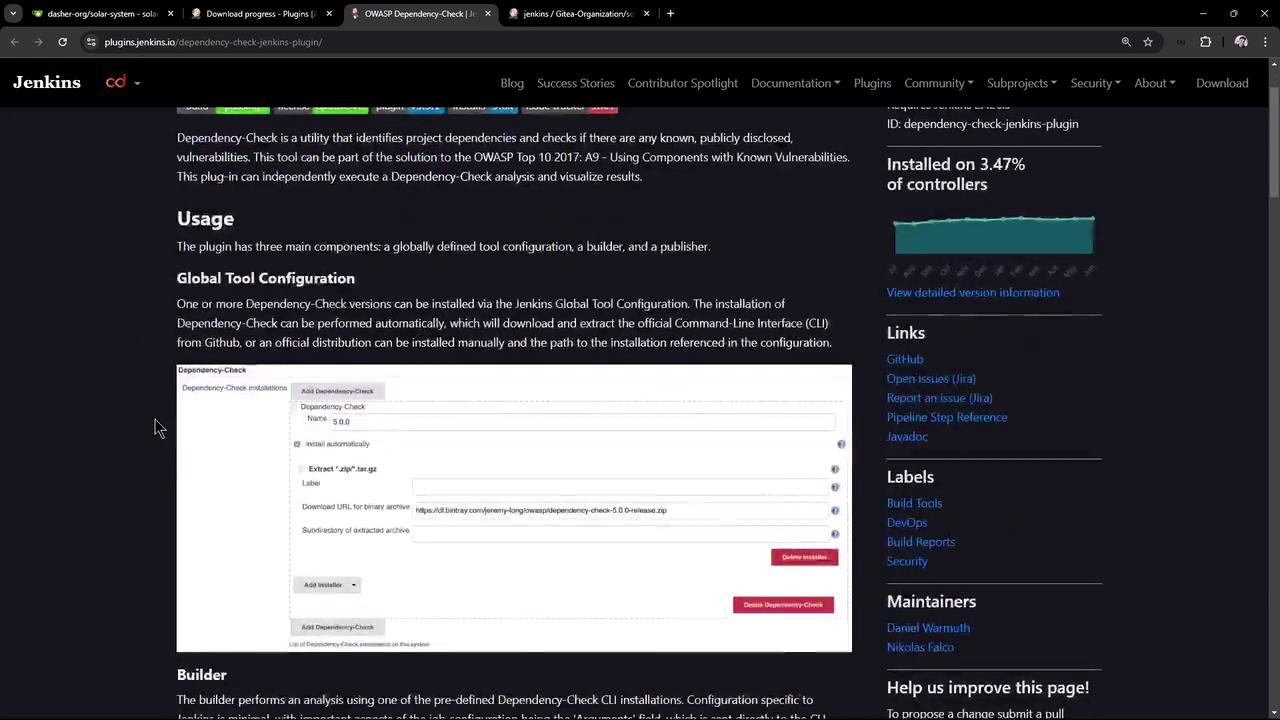
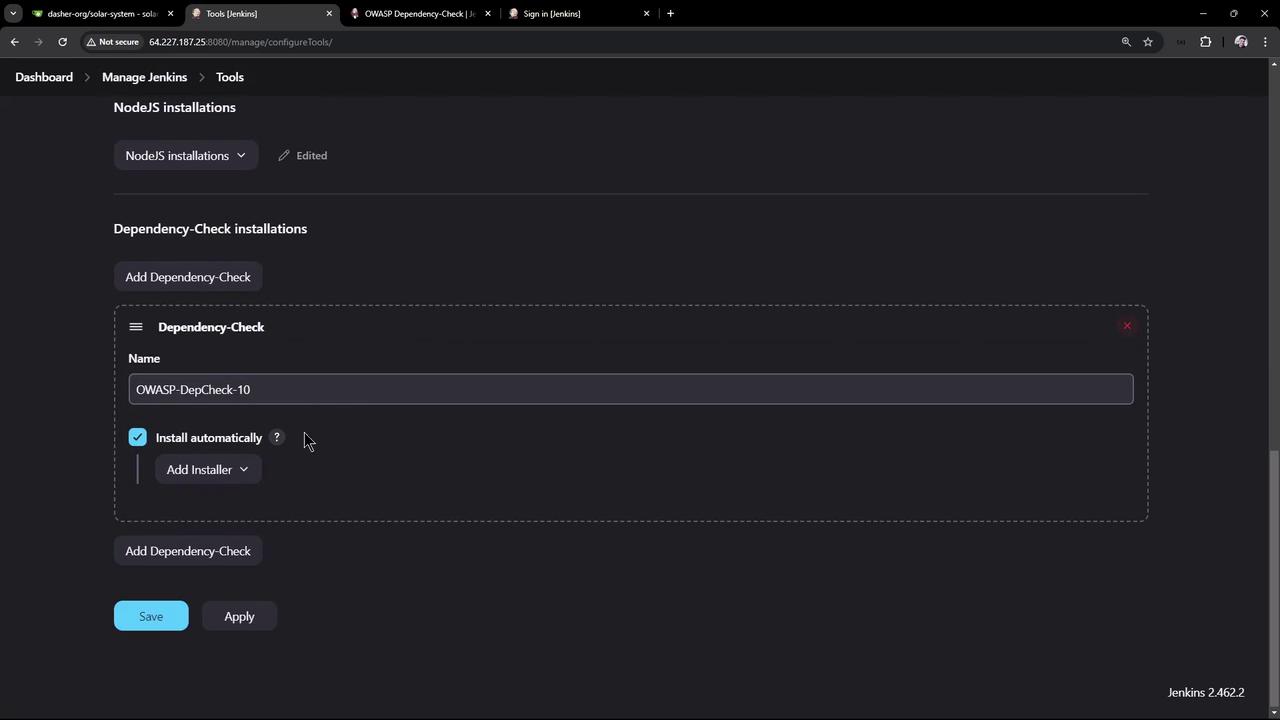
2.3 Generate Pipeline Snippet
In Pipeline Syntax > Snippet Generator:
- Step: Invoke Dependency-Check
- Installation:
OWASP-DepCheck-10 - Arguments:
--scan ./ --out ./ --format 'ALL' --prettyPrint
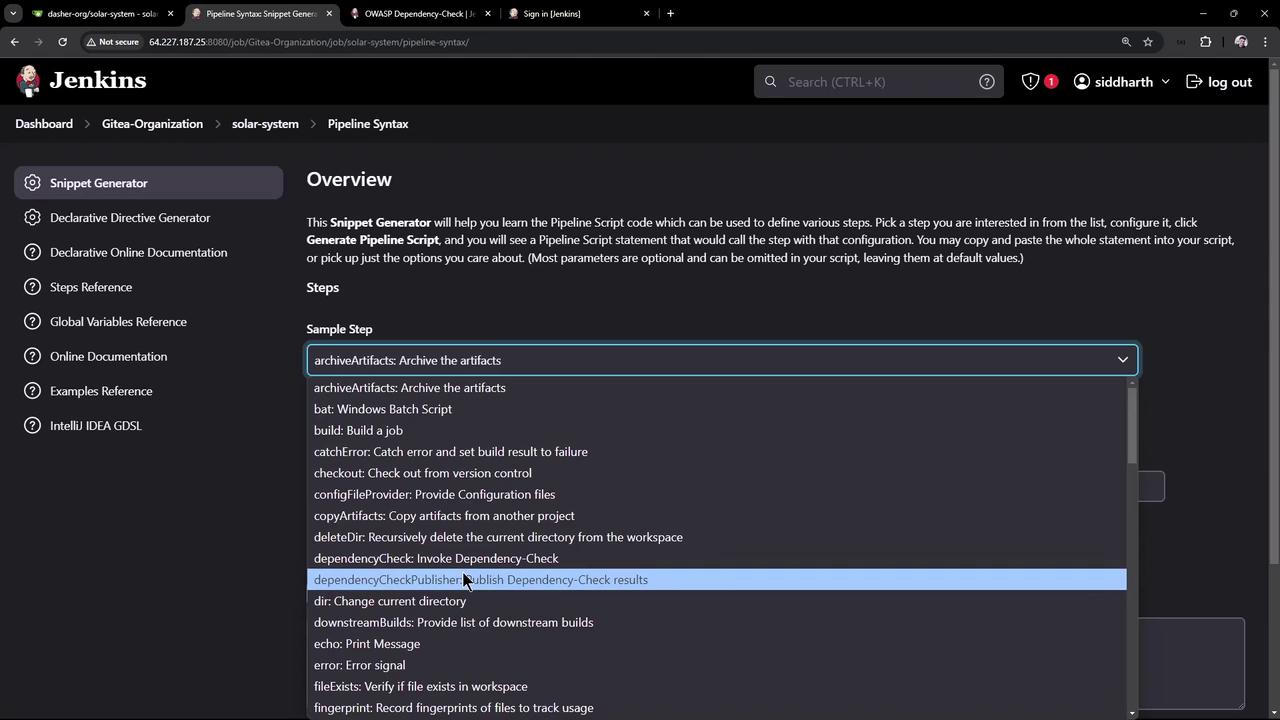
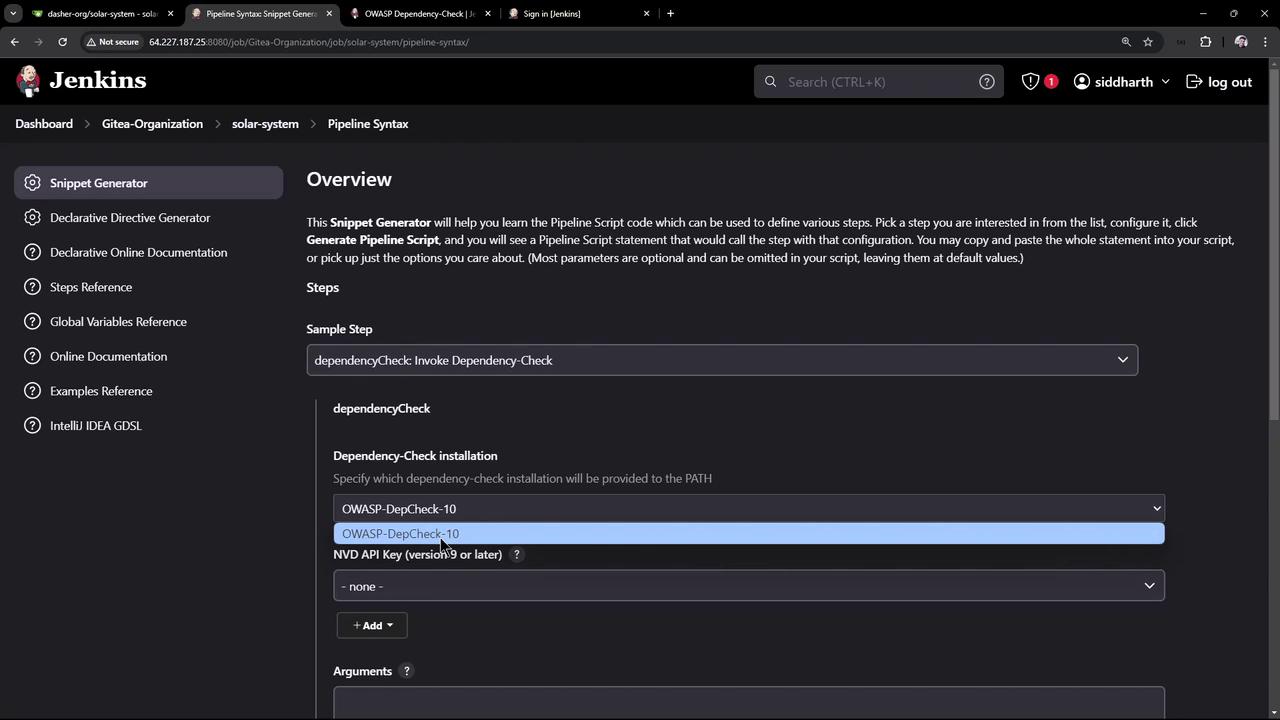
Insert into your Jenkinsfile:
stage('OWASP Dependency Check') {
steps {
dependencyCheck additionalArguments: '''
--scan ./
--out ./
--format 'ALL'
--prettyPrint
''', odcInstallation: 'OWASP-DepCheck-10'
}
}
3. Running the Pipeline
Commit and push your Jenkinsfile. The first run downloads the NVD database (~263 000 records), taking about 20–30 minutes. Look for logs like:
[INFO] Checking for updates
[WARNING] An NVD API Key has not been provided ...
[INFO] NVD API has 263,560 records in this update
...
[INFO] Writing report to /workspace/.../dependency-check-report.html
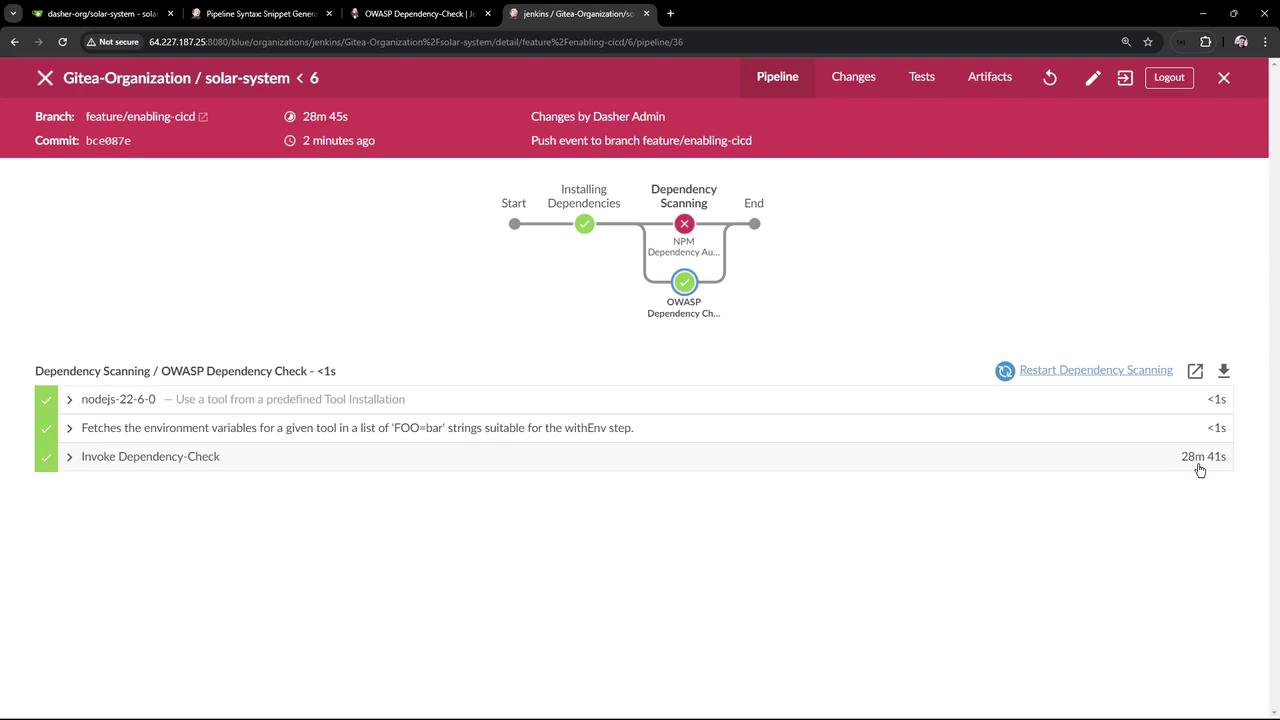
Reports generated in the workspace:
| Format | File Name |
|---|---|
| HTML | dependency-check-report.html |
| XML | dependency-check-report.xml |
| JSON | dependency-check-report.json |
| CSV | dependency-check-report.csv |
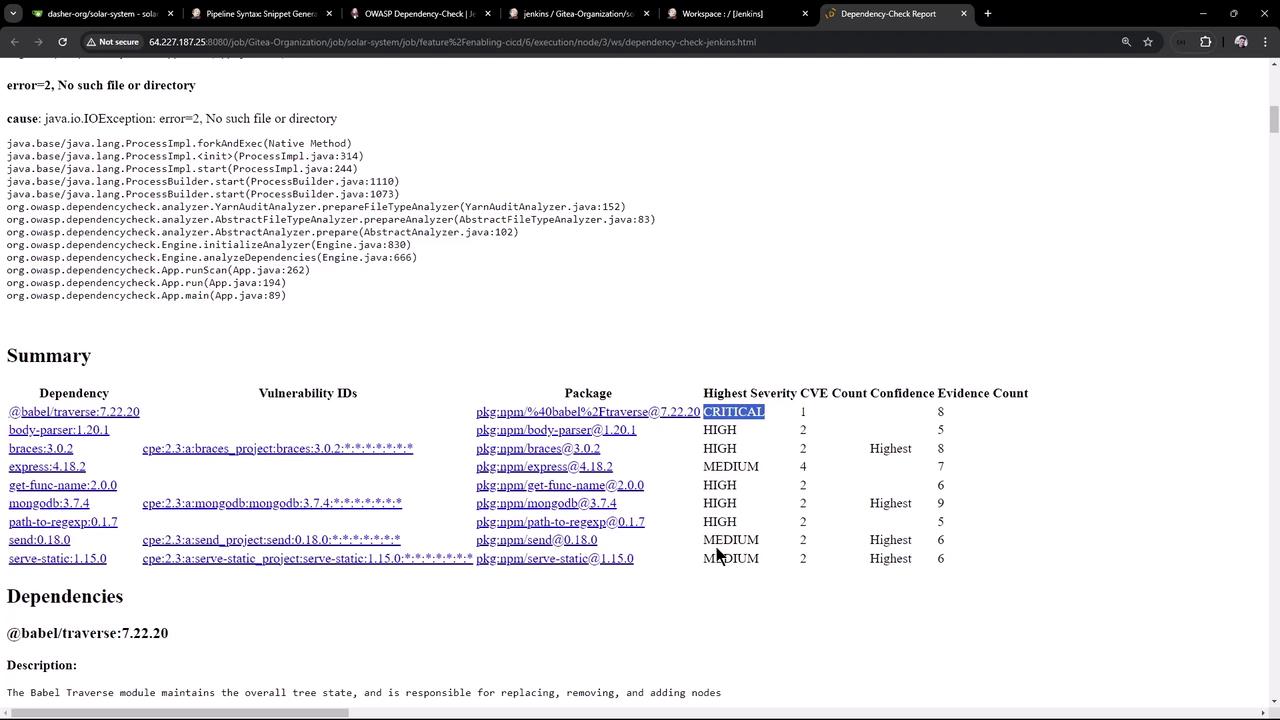
By default, findings don’t fail the build:
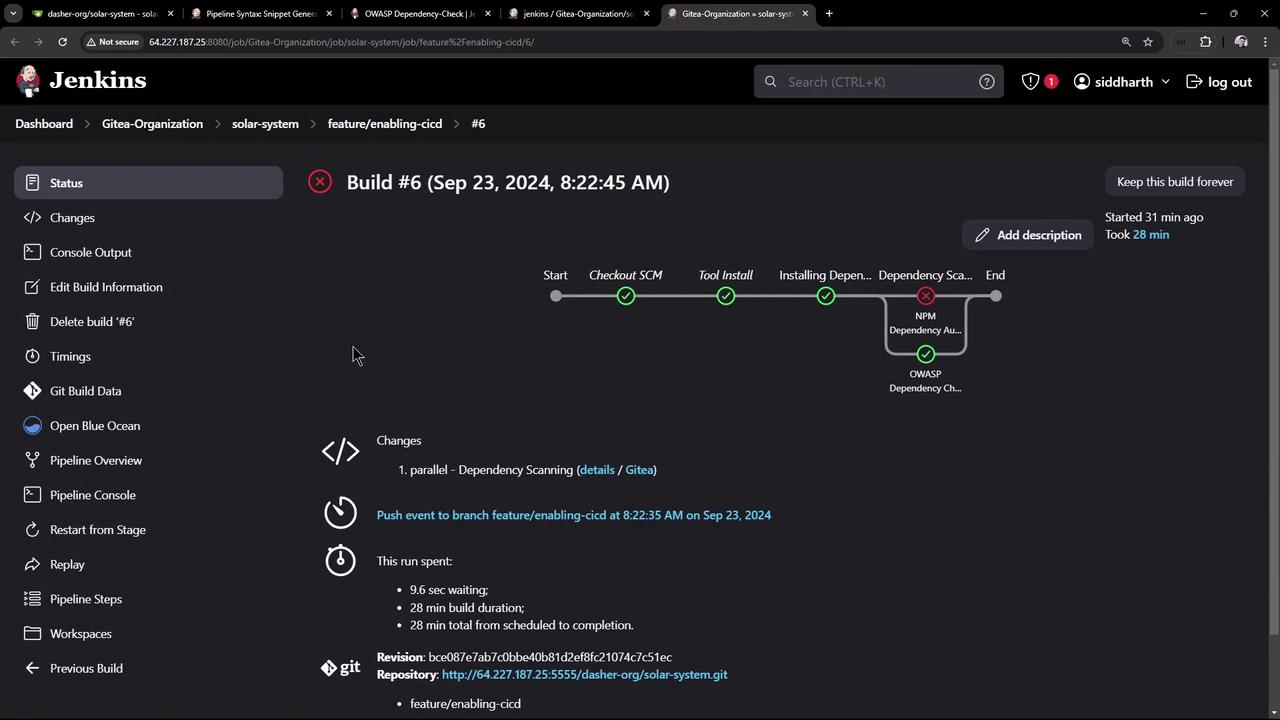
4. Enforcing Quality Gates
Fail builds if thresholds are exceeded:
- In Snippet Generator, select Publish Dependency-Check results
- Configure:
- XML report pattern:
dependency-check-report.xml - Stop build on threshold violation
- Failed total critical:
1
- XML report pattern:
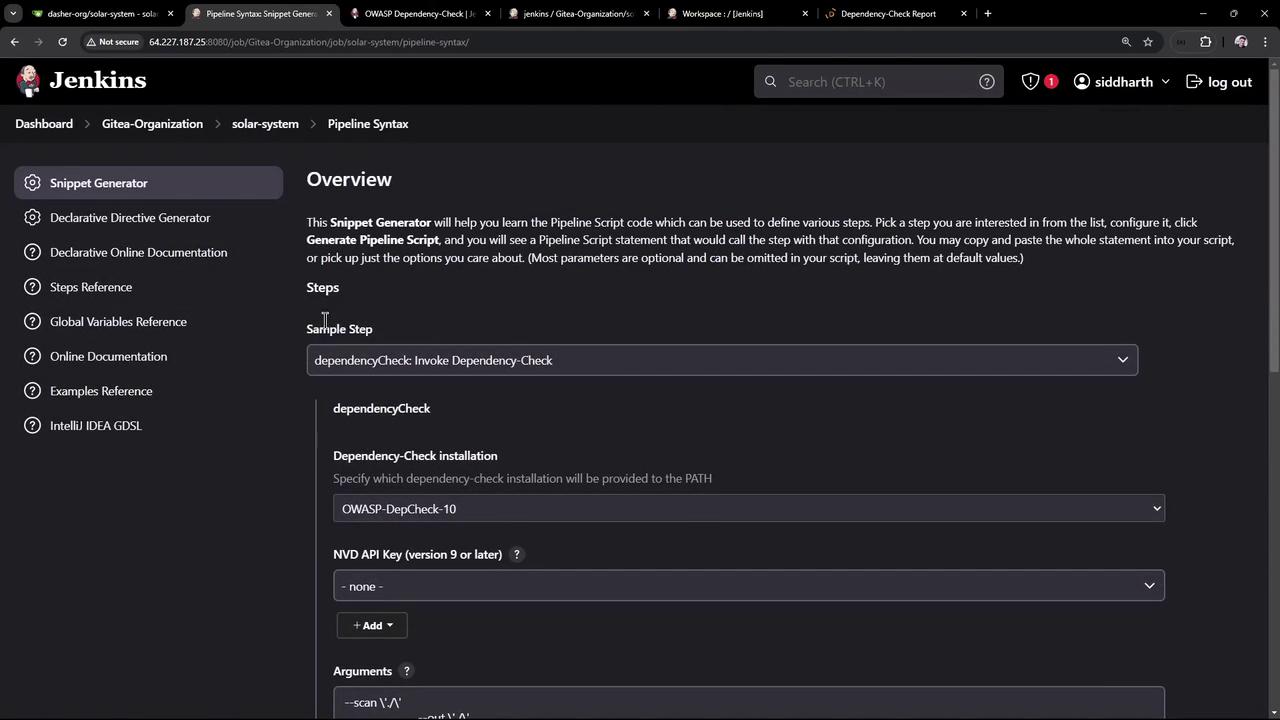
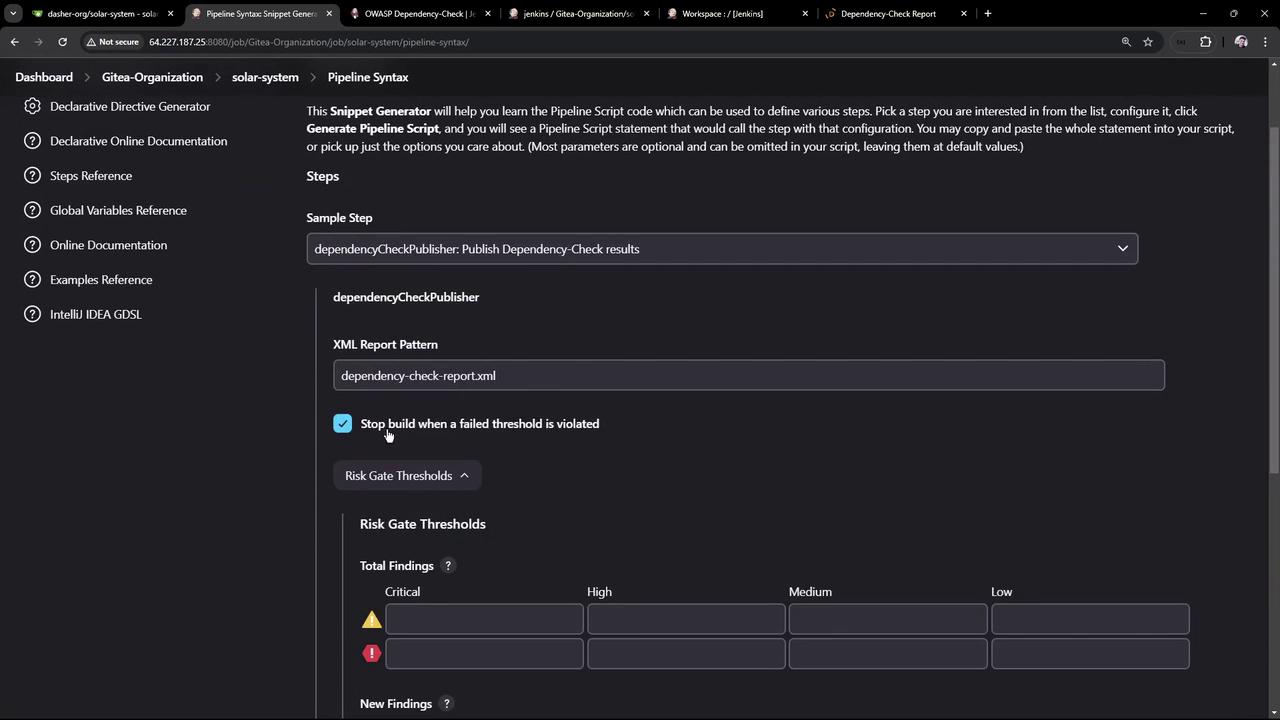
Generated snippet:
dependencyCheckPublisher failedTotalCritical: 1,
pattern: 'dependency-check-report.xml',
stopBuild: true
Combine both scans in parallel:
pipeline {
stages {
stage('Dependency Scanning') {
parallel {
stage('NPM Dependency Audit') {
steps {
sh '''
npm audit --audit-level=critical
echo $?
'''
}
}
stage('OWASP Dependency Check') {
steps {
dependencyCheck additionalArguments: '''
--scan ./
--out ./
--format 'ALL'
--prettyPrint
''', odcInstallation: 'OWASP-DepCheck-10'
dependencyCheckPublisher failedTotalCritical: 1,
pattern: 'dependency-check-report.xml',
stopBuild: true
}
}
}
}
}
}
On the next build you’ll see:
[INFO] Skipping the NVD API Update as it was completed within the last 240 minutes
...
Findings exceed configured thresholds
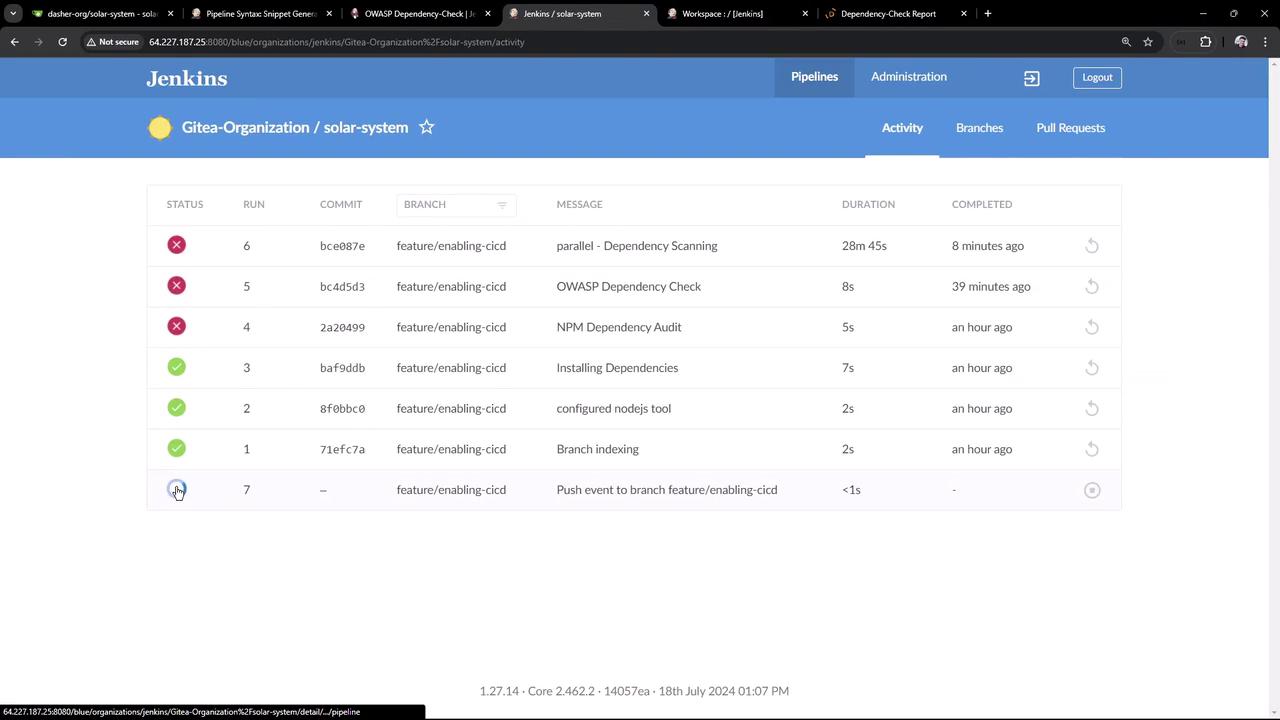

Warning
Builds will now fail if critical vulnerabilities exceed your defined threshold.
Review detailed results in the Jenkins UI to remediate issues.
Conclusion
In this guide, we have:
- Integrated NPM Audit to catch critical Node.js vulnerabilities.
- Configured OWASP Dependency-Check for comprehensive scanning.
- Parallelized both stages to reduce build time.
- Enforced quality gates to automatically fail on critical findings.
Address the flagged vulnerabilities to keep your application secure.
Watch Video
Watch video content